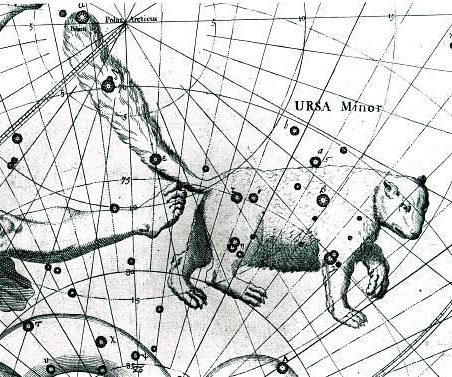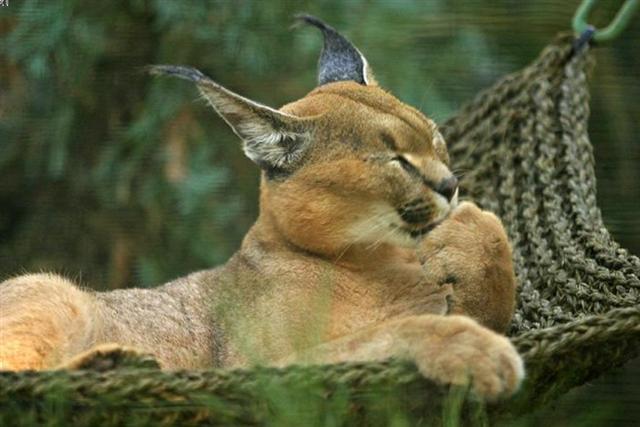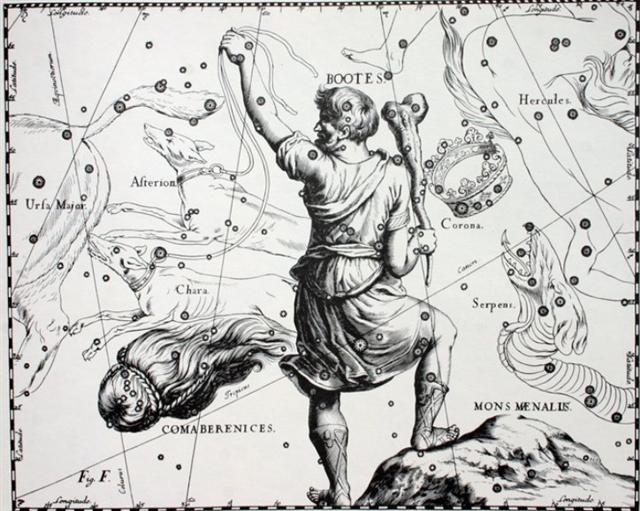Ba4.4
The left part of the central glyph (Ba4-11) in this set of 7 was
explained by Metoro as a torch (rama), which could be
interpreted as a reference to the star ('fire') at the north
pole (Polaris). When the central pillar turned around the
friction might cause a fire.
... They walked in crowds when they arrived
at Tulan, and there was no fire. Only those with Tohil
had it: this was the tribe whose god was first to generate fire.
How it was generated is not clear. Their fire was already
burning when Jaguar Quitze and Jaguar Night first saw it: 'Alas!
Fire has not yet become ours. We'll die from the cold', they
said. And then Tohil spoke: 'Do not grieve. You will have your
own even when the fire you're talking about has been lost',
Tohil told them. 'Aren't you a true god! Our sustenance and our
support! Our god!' they said when they gave thanks for what
Tohil had said. 'Very well, in truth, I am your god: so be it. I
am your lord: so be it,' the penitents and sacrificers were told
by Tohil. And this was the warming of the tribes. They were
pleased by their fire. After that a great downpour began, which
cut short the fire of the tribes. And hail fell thickly on all
the tribes, and their fires were put out by the hail. Their
fires didn't start up again. So then Jaguar Quitze and Jaguar
Night asked for their fire again: 'Tohil, we'll be finished off
by the cold', they told Tohil. 'Well, do not grive', said Tohil.
Then he started a fire. He pivoted inside his sandal ...

 |
 |
 |
 |
 |
 |
 |
|
Ba4-8
(132) |
Ba4-9 |
Ba4-10 |
Ba4-11 |
Ba4-12 (136) |
Ba4-13 |
Ba4-14 |
|
ki to tama - e
ko manu huki ki to toki |
eko te tagata kua oho |
kua rama - ki to pua |
e tagata aha e
rua mai tae e oho ki te tagata |
tuu i te kihikihi - i
te henua - kua moe - kua hakarao ki tona
tamaiti |
|
Tama.
1. Shoot (of plant), tama
miro, tree shoot; tama tôa,
shoot of sugarcane. 2. Poles, sticks,
rods of a frame. 3. Sun rays. 4. Group
of people travelling in formation. 5. To
listen attentively (with ear, tariga,
as subject, e.g. he tama te tariga);
e-tama rivariva tokorua tariga ki
taaku kî, listen carefully to my
words. Tamahahine, female.
Tamahine (= tamahahine),
female, when speaking of chickens:
moa tamahine, hen. Tamâroa,
male. Vanaga. 1. Child. P Pau.: tama
riki, child. Mgv.: tama, son,
daughter, applied at any age. Mq.:
tama, son, child, young of animals.
Ta.: tama, child. Tamaahine
(tama 1 - ahine),
daughter, female. Tamaiti, child
P Mq.: temeiti, temeii,
young person. Ta.: tamaiti,
child. Tamaroa, boy, male. P
Mgv.: tamaroa, boy, man, male.
Mq.: tamaóa, boy. Ta.: tamaroa,
id. 2. To align. Churchill. In the
Polynesian this [tama na, father
in the Efaté language] is distinguished
from táma child by the accent
tamā or
by the addition of a final syllable
which automatically secures the same
incidence of the accent, tamái,
tamana
... Churchill 2.
Rama.
Torch. Fischer. T. Torch.
Henry. Pua. 1. A
zingiberacea (plant of which few
specimens are left on the island). 2.
Flower: pua ti, ti flower, pua
taro, taro flower, pua maúku
pasture flower; pua nakonako, a
plant which grows on steep slopes and
produce red, edible berries. 3. Pua
tariga (or perhaps pu'a tariga),
anciently, hoops put in earlobes. 4. The
nanue fish when young and tender.
Puapua, summit, top, upper part;
te puapua o te maúga, the top of
the mountain; te puapua kupega,
the upper part of a fishing net. Vanaga.
Pu'a. 1. (Modern form of pu'o),
to cover up something or oneself, to put
on; ka-pu'a te ha'u, put on your
hat; ka-pu'a-mai te nua, cover me
up with a blanket. 2. To respond to the
song of the first group of singers; to
sing the antistrophe; he-pu'a te tai.
3. To help; ka-pu'a toou rima ki a
Timo ite aga, help Timothy with the
work. 4. Pu'a-hare, to help a
relative in war or in any need;
ka-oho, ka-pu'a-hare korua, ko ga kope,
go, give your relative a hand, lads.
5. To speak out in someone's favour;
e pu'a-mai toou re'o kia au, speak
in my favour, intercede for me.
Pu'apu'a, to hit, to beat. Vanaga.
1. Flower, ginger, soap; pua mouku,
grass. 2. To grease, to coat with tar,
to pitch; pua ei meamea, to make
yellow. Puapua, a piece of cloth.
Mgv.: pua, a flower, turmeric,
starchy matter of the turmeric and hence
soap. Mq.: pua, a flower, soap.
Ta.: pua, id. Ma.: puapua,
cloth wrapped about the arm. Churchill. |
|
CLOSE
TO THE FULL MOON: |
|
ε Centauri (206.3), κ Oct. (206.4)
*165.0 = *206.4 - *41.4 |
No star listed (207) |
τ
Bootis (208.2),
BENETNASH (Leader of the Daughters of
the Bier) =
η
Ursae Majoris
(208.5),
ν
Centauri (208.7),
μ
Centauri,
υ
Bootis (208.8) |
No star listed (209) |
MUPHRID (Solitary Star) = η Bootis
(210.1), ζ Centauri (210.3) |
φ Centauri (211.0), υ¹ Centauri (211.1),
υ² Centauri (211.8), τ Virginis (211.9) |
AGENA (At the Knee) =
β
Centauri
(212.1),
θ
Apodis (212.5),
THUBAN (Dragon) =
α
Draconis
(212.8) |
|
Oct 13 |
14 |
15 (288) |
16 |
17 |
18 |
19 (292) |
|
CLOSE
TO THE SUN: |
|
4-13 |
14 (104) |
15 (288 - 183) |
16 |
17 (107) |
18 |
April 19 |
|
ACHERNAR (End of the River) = α Eridani
(23.3),
χ
Andromedae (23.6),
τ
Andromedae (23.9) |
ALSEIPH (Scimitar) =
φ
Persei
(24.5),
τ
Ceti (24.7) |
No star listed (25) |
ANA-NIA-10 (Pillar-to-fish by)
χ Ceti (26.1),
POLARIS = α Ursae Minoris,
BATEN KAITOS = ζ Ceti
(26.6),
METALLAH = α Trianguli
(26.9) |
Al Sharatain-1 /
Ashvini-1 /
Bond-16 (Dog) /
Mahrū-sha-rishu-ku-1 (Front of the Head
of Ku)
SEGIN =
ε
Cassiopeia, MESARTHIM =
γ
Arietis,
ψ
Phoenicis (27.2),
SHERATAN (Pair of Signs) =
β
Arietis,
φ
Phoenicis (27.4)
*351.0 = *27.4 - *41.4 |
ι Arietis (28.0), λ Arietis (28.2), υ
Ceti (28.8) |
ALRISHA (The Knot) = α Piscium, χ Phoenicis (29.2),
ε Trianguli (29.4),
ALAMAK
(Caracal) = γ Andromedae (29.7)
*353.0 = *29.4 - *41.4 |
 |
Presumably the text here shifted attention from
the Full Moon to the Sun, which phenomenon we have
found in the C text, where Polaris was at the end of
side a and Sheratan at the beginning of side b,
followed by Arcturus (*215.4) half a year away and
at glyph number 6 on side b. Although the process
of change continued, as we can see also in the B text:
 |
 |
 |
 |
 |
 |
 |
 |
|
Ba4-15 |
Ba4-16 |
Ba4-17 |
Ba4-18 |
Ba4-19 |
Ba4-20 |
Ba4-21 (145) |
Ba4-22 |
|
kua huki ko te manu utu huki a ruga o
te tagata mai tae rere i te toki |
e kua tupu ko te pua |
e kua tuu ko te vaero kua oho |
ki to kihikihi - ko koe i te henua |
kua moe - ki tona tamaiti e manu gutu
huki a ruga |
|
Vaero.
Chicken's long tail feather; lobster's
antenna (vaero ura). Vanaga. Tail of a kite, tail
of a bird (uero). T Pau.: tuavaero, rump;
kaero, tail. Mgv.: vero, tail. Mq.: veó,
id. Ta.: aero, id. Churchill.
Gutu. 1. Lips, mouth, beak, snout
(goutu); gutu ahu, swollen lip; gutu
hiti, thick lip; gutu mokomoko, pointed lip;
gutu no, vain words; gutu pakapaka,
scabbed lips; gutu raro, lower lip; gutu ruga,
upper lip. Gutugutu, snout. P Pau.: gutu,
lip, beak, bill. Mgv.: gutu, the chin, the mouth
of a fish. Mq.: nutu, beak, snout. Ta.: utu,
lip, mouth, beak, snout. Gutupiri, attentively.
Gututae, attentively; gututae mekenu, a
small mouth. Gututika, tattoing on the lips. 2.
Pau.: Gutuafare, to save, to economize. Ta.:
utuafare, family, residence. 3. Pau.: Guturoa,
to grimace, to pout. Mgv.: guturoa, to grimace.
Churchill.
Ruga.
Upper part, higher part; when used as a
locative adverb, it is preceded by a preposition: i
ruga, above, on; ki ruga, upwards, mai
ruga, from above. When used with a noun the same
preposition is repeated: he-ea te vî'e Vakai, he-iri
ki ruga ki te Ahu ruga, the woman Vakai went, she
climbed Ahu Runga. Ruga nui, high, elevated,
lofty: kona ruga nui, high place, elevated
position, high office; mana'u ruga nui, elevated
thoughts. Vanaga. High up; a ruga, above; ki
ruga, on, above, upon; ma ruga, above; o
ruga, upper; kahu o ruga, royal (sail);
ruga iho, celestial. Hakaruga, to accumulate,
to draw up. P Pau., Mgv.: ruga, above. Mq.:
úna, úka, id. Ta.: nua, nia,
id. Churchill. |
|
14h (213.1)
π Hydrae, χ
Centauri (213.0),
MENKENT (Shoulder of the Centaur) =
θ
Centauri
(213.1) |
Neck-2 (Dragon)
ASELLUS TERTIUS (3rd Ass Colt) =
κ
Bootis,
κ
Virginis, 14 Bootis
(214.8) |
Al Ghafr-13 (The Cover) /
Svāti-15 (Very Good) /
TAHUA-TAATA-METUA-TE-TUPU-MAVAE-6 (a pillar to stand by)
15 Bootis
(215.2),
ARCTURUS = α Bootis (215.4),
ASELLUS SECUNDUS (2nd Ass Colt) =
ι
Bootis
(215.5),
SYRMA (Train of the Virgin's Robe) =
ι
Virginis,
λ
Bootis (215.6),
η
Apodis (215.8)
*174.0 = *215.4 - *41.4 |
ι Lupi, 18 Bootis
(216.3),
KHAMBALIA
(Crooked-Clawed) = λ Virginis (216.4), υ Virginis (216.5), ψ Centauri (216.6), ε Apodis
(216.8)
*175.0 = *216.4 - *41.4 |
ASELLUS PRIMUS (1st Ass Colt) =
θ
Bootis
(217.8) |
τ
Lupi,
δ
Oct. (218.1),
φ
Virginis (218.7)
FOMALHAUT (α Piscis Austrini) |
σ
Lupi (219.1),
ρ
Bootis (219.5),
HARIS (Keeper) =
γ
Bootis
(219.7) |
σ Bootis (220.2),
η Centauri (220.4)
*179.0 = *220.4 - *41.4 |
|
Arku-sha-rishu-ku-2 (Back of the Head of Ku)
2h (30.4)
κ
Arietis (30.3),
HAMAL (Sheep) =
α
Arietis
(30.5)
ALKES (α
Crateris) |
DELTOTUM = β Trianguli
(31.2), ι Trianguli (31.7), η Arietis (31.9) |
ξ¹ Ceti (32.1) |
γ,
δ
Trianguli (33.0),
χ
Persei (33.2),
10 Trianguli
(33.5),
θ
Arietis (33.3),
MIRA
(Astonishing) =
ο
Ceti
(33.7) |
No star listed (34) |
ξ Arietis (35.0),
ρ Ceti
(35.4),
12 Trianguli
(35.8), ξ² Ceti (35.9)
*360.0 = *35.4 - *41.4 |
σ Ceti (36.9) |
ν Ceti (37.9) |
 |
 |
 |
|
Ba4-23 (221 - 74 =
147) |
Ba4-24 (148) |
Ba4-25 (40 + 109 = 149) |
|
kua rere ki te toki |
e tagata - hakahunu kua tupu te
kihikihi i te henua |
|
ρ Lupi (221.0),
TOLIMAN = α
Centauri
(221.2), π Bootis (221.8), ζ Bootis (221.9) |
31 Bootis
(222.0),
YANG MUN (South Gate) =
α
Lupi
(222.1),
RIJL AL AWWA (Foot of the Barker) =
μ
Virginis
(222.5),
ο
Bootis (222.9) |
IZAR (Girdle) =
ε
Bootis
(223.0),
109 Virginis,
α
Apodis (223.3),
μ
Librae (223.8) |
|
ν Arietis (38.5), δ, ε Ceti (38.8) |
μ
Arietis (39.4), HEAD OF THE FLY = 35 Arietis
(39.6),
KAFFALJIDHMA (Part of a Hand) =
γ
Ceti,
θ
Persei (39.8)
*363.0
= *39.4 - *41.4 |
π
Ceti,
ο
Arietis (40.0),
ANGETENAR (Bend in the River) =
τ¹
Eridani,
μ Ceti (40.2),
RIGHT WING = 39 Arietis
(40.9) |
And as in the C text, there were
8 glyphs in a group after Thuban / Alrisha.
In the H text we can find a glyph much like Ba4-17, viz. Hb8-18:
The P text in parallel with the H text at first sight
appears to be running 648 - 465 = 183 days (half a year) away.
However, the distance could be due to
Mensis Intercalaris:
... The ordinary year in the previous Roman calendar
consisted of 12 months, for a total of 355 days. In
addition, a 27-day intercalary month, the Mensis
Intercalaris, was sometimes inserted between February
and March. This intercalary month was formed by inserting 22
days after the first 23 or 24 days of February; the last
five days of February, which counted down toward the start
of March, became the last five days of Intercalaris. The net
effect was to add 22 or 23 days to the year, forming an
intercalary year of 377 or 378 days ...
This rather confusing information from Wikipedia can perhaps
be summarized as follows:
|
Febr 23
(350)
Terminalia |
27 (Mensis
Intercalaris) |
March 1 (355
+ 1)First day before the Calends of March |
|
22 |
5 |
There are 648 (→ 81 * 8)
glyphs on side b of the H tablet and Hb8-18 is
number 377 (= 355 + 22):
 |
139 |
 |
235 |
 |
|
Ba1-1 |
Ba4-17 (141 = 254 -
113) |
*Hb8-18 (377 = 490 - 113) |
|
HAEDUS II
(*75) |
ARCTURUS (*215.4) |
18 * 29½
- 80 = *451 (*85) |
|
APRIL
1 (91) |
AUG
19 (231 = *151) |
APRIL 11 (*387 =
*451 - *64) |
|
"April 24
(114 = 1 + 113) |
295 - 41
= 254 (*174.0) |
490 =
254 + 8 * 29½ (*410.0) |
|
140 + 236
+ 1 = 377 |

|


















